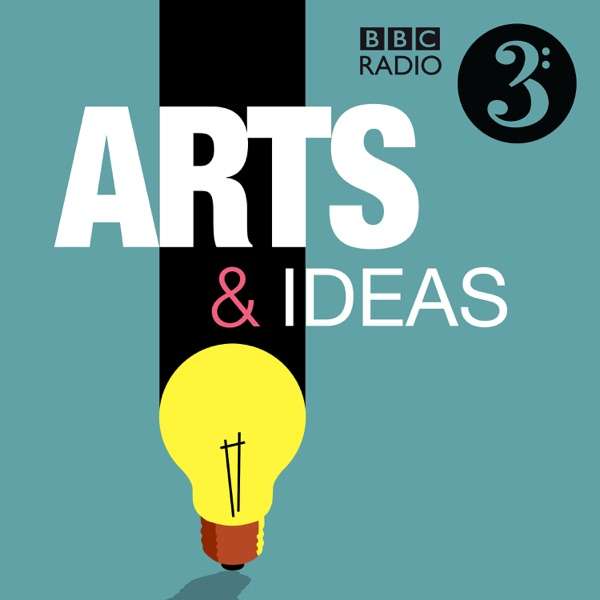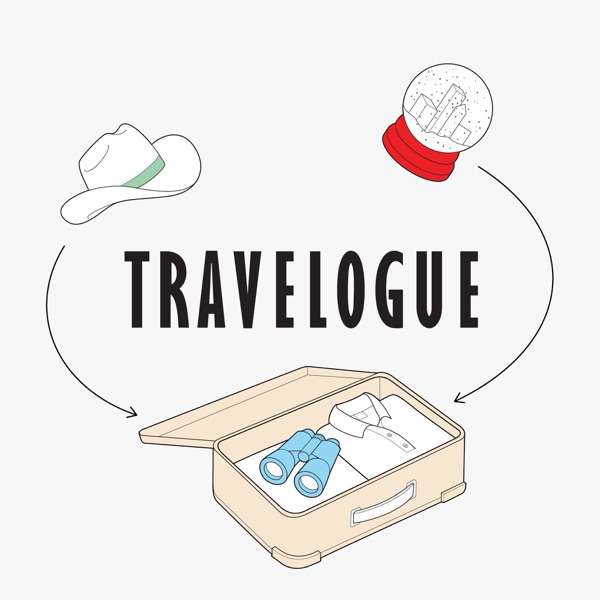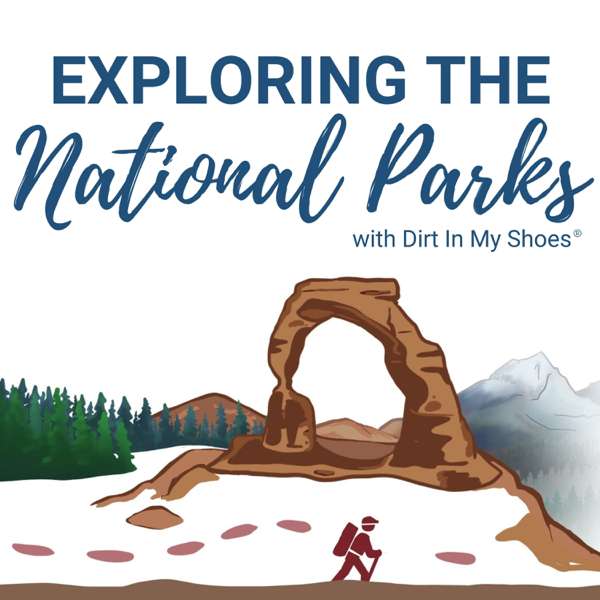For the 50th anniversary of the end of World War II, the Smithsonian National Air and Space Museum planned to display the Enola Gay, the Boeing B-29 that dropped the atomic bomb on Hiroshima. The plane was restored to be part of a full exhibit, presented alongside context about the atomic bombing's mass civilian casualties.
But that exhibit never opened. Instead, after years of script revisions and intense pressure from veterans' groups and Congress, the museum displayed the restored bomber's fuselage with minimal interpretation. The exhibit was primarily dedicated to the technical process of restoring the aircraft; as one visitor noted, "I learned a lot about how to polish aluminum, but I did not learn very much about the decision to drop the atomic bomb."
In this episode, historian Gregg Herken, who served as Chairman of the museum's Space History Division during the controversy, recounts how the exhibit went from reckoning with the bomb's full impact to re-enforcing a patriotic narrative. He recalls the specific moments that led up to one of the museum industry's cautionary tales, like when the director agreed to remove evocative artifacts like a schoolgirl's carbonized lunchbox from Hiroshima from the exhibition plans, and how the Air Force Association demanded the exhibit say the bombing saved 1 million American lives and other assertions that have been challenged by generations of historians.
Today, as a new presidential executive order dictates how the Smithsonian interprets American history, we realize the "Enola Gay Fiasco" isn't just a cautionary tale—it's the blueprint for a more aggressive campaign to justify anything.
Topics and Notes
- 00:00 Intro
- 00:15 The Enola Gay in the 1980s
- 01:07 Gregg Herken
- 02:21 Initial Planning
- 02:40 Martin Harwit
- 03:48 Herken's Visit to Hiroshima
- 04:39 'The Lunchbox'
- 05:32 Initial Exhibit Script
- 06:26 Opposition and Controversy
- 07:15 Revisions and Criticisms
- 10:49 Air Force Association's Demands
- 11:59 Exhibit Cancellation
- 13:37 "Pale Shadow"
- 14:10 Reflecting on History and Censorship
- 20:55 Outro | Join Club Archipelago 🏖
Unlock exclusive museum insights and support independent museum media for just $2/month.
Join Club Archipelago
Start with a 7-day free trial. Cancel anytime.
Your Club Archipelago membership includes:
- 🎙️Access to a private podcast that guides you further behind the scenes of museums. Hear interviews, observations, and reviews that don't make it into the main show.
- 🎟️ Archipelago at the Movies, a bonus bad-movie podcast exclusively featuring movies and other pop culture that reflect the museum world back to us.
- ✨A warm feeling knowing you're helping make this show possible.
Transcript
Below is a transcript of Museum Archipelago episode 110. For more information on the people and ideas in the episode, refer to the links above.
View Transcript
Welcome to Museum Archipelago. I'm Ian Elsner. Museum Archipelago guides you through the rocky landscape of museums. Each episode is rarely longer than 15 minutes. So let's get started.
By the late 1980s, the Enola Gay – the Boeing B-29 Superfortress that dropped the atomic bomb on Hiroshima – had been sitting disassembled at the Smithsonian's Paul E. Garber Preservation, Restoration, and Storage Facility in Suitland, Maryland for decades. What was once a beautiful shiny machine with four powerful engines, just powerful enough with the right banking maneuver to escape the hell it unleashed, was scattered and severed, with disheveled tubes where the wings used to be and the remains of birds nests in the turrets.
Gregg Herken: It was shortly after I joined the museum and I went out to the restoration facility that the Smithsonian operates in Garber in Maryland. And they wanted to show me around. And since I was the new chairman of the Department of Space History, they said I could get into the fuselage of the Enola Gay.
This is Gregg Herken, retired professor of American Diplomatic History at the University of California, and Chairman of the National Air and Space Museum's Space History Division from 1988 to 2003.
Gregg Herken: Hello. My name is Gregg Herken. I'm a retired professor of American Diplomatic History at the University of California.
Herken was part of the team planning the exhibition at the National Air and Space Museum that would feature the restored Enola Gay and of course he accepted the invitation and climbed up into the fuselage.
Gregg Herken: So I sat in Tibbets' seat, in the pilot seat for a second, and then I sat in the bombardier seat. And off to the left was a panel that had, I think it was five toggle switches. And one of them had the label "bombs." And actually on the day of the Hiroshima mission, it would've said in a little tag underneath that "special."
Gregg Herken: But I remember just thinking that I could sit in, I'm sitting in that seat, I could just reach over and flip that switch. And that was the switch that released the Little Boy bomb on Hiroshima. And I thought there is bad juju with that. I did not want to touch it.
At the other end of that switch was about 80,000 people, civilians of Heroshima.
Herken was chosen to be part of the exhibition team by the museum's new director, Martin Harwit.
Gregg Herken: I've written about and taught the subject of nuclear history, and that's why I think Martin chose me to begin at last the effort to get the Enola Gay on exhibit.
Director Martin Harwit, who was hired in 1987, was a bit of a departure from previous National Air and Space Museum directors who tended to be pilots or astronauts. Harwit was an astrophysicist. Gregg Herken thought that it was a signal that the Smithsonian was interested in not just displaying but also interpreting the artifacts that represent the nation's past.
The planned exhibition intended to showcase the restored plane along with multiple perspectives on the first atomic bombings in warfare – including their devastating human toll. Harwit still has his first written notes from when he first arrived at the museum and started thinking about, which show his brainstorm about the historical context of the bombing of Hiroshima in the escalation of bombing in World War II.
"This is not an exhibit about the rights and wrongs of war," Harwit wrote in 1987, "about who started what, and who were the bad guys and who the good. It is about the impact and effects of bombing on people and on the strategic outcome of conflicts. Is bombing strategically effective? Are the costs worth the strategic gains? How great is human error?"
As part of the early planning process, Gregg Herken visited the Hiroshima Museum in Japan in 1991.
Gregg Herken: Yes, Martin asked me to go to Hiroshima. The exhibit was just getting started and really in the planning stages. And we wanted to see if we could get artifacts from the Hiroshima Museum. So I was sent there and I met with the director. And I was frankly a little concerned about how I'd be received, that the idea of shipping artifacts about the atomic bombing to the Smithsonian for an exhibit they didn't really know about. I thought they might be hostile or at least suspicious, but he was very welcoming. He was actually a survivor of the atomic bombing.
The director offered to loan the Smithsonian any of the artifacts his museum had in its collection, for as long as the "Enola Gay" remained on display at the National Air and Space Museum.
Gregg Herken: I do remember walking around the museum and there was one artifact that really stood out to me and we wanted to include it in the exhibit and we nicknamed it "the lunchbox" and it was just a ceramic tube that had contained rice and peas and it had been taken by a young girl to school as her lunch. And she obviously did not survive the bombing and the tube - you could see that the rice and the peas in it had been carbonized by the heat of the bomb.
Gregg Herken: So we were never going to show any terrible pictures of burned bodies. We didn't need to. That's all any adult had to do was to look at this lunchbox, at the carbonized food in the little ceramic tube to realize what had happened to that little girl and what it must have been like to have been on the ground at Hiroshima at that time.
Back in the United States the exhibition team continued developing their plans and by early 1994, the National Air and Space Museum had completed the script for the exhibit, now titled "The Crossroads: The End of World War II, the Atomic Bomb, and the Origins of the Cold War."
The team sought input from various stakeholders including veterans' groups and the Air Force Association. Initially, feedback seemed positive.
Gregg Herken: The Air Force Association is basically a private lobby based in Washington DC for the Air Force. And we knew – the museum, Martin knew that they might be early critics, so they were brought into the planning of the exhibit as was the Air Force historian, Richard Hallion, and were shown the original exhibit script. And I remember we had a meeting in the director's conference room and everybody seemed to be, "Well, this looks good."
But behind the scenes, an opposition was mobilizing.
Gregg Herken: And then they all left. And then we found out that the Air Force Association had hired a public relations firm in DC to essentially stop the exhibit going forward, at least as it was conceived. Even though there had been no criticism at the meeting itself.
This was the beginning of what would become a full-scale public relations battle over how the Enola Gay should be represented at the National Air and Space Museum. The controversy began to spill into the media, with accusations that the exhibition denigrated American heroism and technological achievement by focusing too much on Japanese suffering.
Herken acknowledges that, in hindsight, some of the criticisms had merit, and the museum continued updating the script and the exhibition plans.
Gregg Herken: Well, they felt that the exhibit really took the viewpoint of the victims of the bombing. Actually, in retrospect, I think there was a certain element of truth to that. One of the things that would've been in the original exhibit as you walk in from the mall, you would've turned to the right and basically toward the aeronautics section of the museum. And the first thing you would see is a giant photograph of a young child who had a smudged face. So that the first thing you would see is basically one of the victims.
Gregg Herken: I think a lot of people that, okay, that this is going to be from the viewpoint of the people who were on the ground and not from the people who were in the plane, in the air. So that was problematic and that was changed and I think properly so.
Gregg Herken: Also the original exhibit script had a line, and I think here what the curators were trying, I know what the curators were trying to do was present both sides kind of objectively. And unfortunately, I think the lead label was kind of tone deaf that it said for the Americans it was a war of vengeance because of Pearl Harbor - I'm basically paraphrasing - but for the Japanese, it was a war to preserve their sacred culture. Well, that's not the right way to begin things. And that of course was taken out too. And there was, I think, a reasonable objection to that original label.
But there was a more fundamental objection to the planned exhibit that the exhibit team didn't find the evidence for in the historical scholarship: that the dropping of the atomic bomb saved a million American lives.
I think about my own extended family members who served in the Pacific in World War II, and who died – fortunately relatively recently – convinced that the use of those atomic bombs saved their lives. The one million American lives was certainly how I was taught in history class in elementary and middle school compared with 80,000 or so at Hiroshima. This was taking a fact, the number of dead from the atomic bombing, and mixing it together with an assertion: how many would have died because of not using the bombing. Particularly since equating the two is a comforting thought that ties into America's sense of itself: "Other countries kill people for no reason. We kill people for good reason."
That one million American casualties figure seems to have come from a February 1947 article in Harpers called The Decision to Use the Atomic Bomb by Secretary of War Henry L. Stimson.
Gregg Herken: Certainly the million American lives, that the bomb exclusively or decisively ended the war, ignoring the Russian entry into the war, which is a surprise to the Japanese. And there were alternatives including the continued strategic conventional bombing of Japan and the economic blockade of the islands, which was going forward. That there was the reason there was no alternative is because the invasion, the land invasion of the Japanese home islands was imminent. Well, no, it wasn't. It was planned for November and the bomb was dropped in August.
Gregg Herken: Would the Japanese have surrendered in the meantime? It's a counterfactual question. It can't be answered because it can't be tested. But there is a mythos about the atomic bombing that continues today.
An exhibit that sits in that question is a worthy exhibit. We always have choices. Countries have choices. There's very rarely only two choices. But that's not the exhibit we got.
Herken recalls that the Air Force Association required the museum to say the following three things in the "Enola Gay" exhibit, and he and his colleagues were given to understand that these assertions were unequivocal and non-negotiable. They were: (1) The atomic bomb ended the war; (2) It saved one million American lives; and (3) There was no real alternative to its use.
He continues, "all three of these claims have been challenged by generations of historians, citing documentary evidence from the time that contradicts or significantly modifies each one."
Gregg Herken: I was actually new to the museum, so I can't say that it was, there's never been this sort of, ultimatum issued by people who were involved in, in the exhibits or might be interested in exhibits. But, um, it was certainly new to me. And, um, and I think, you know, all of, all of those assertions are somewhat problematic and, but that was made sort of pretty clear, I think, to Martin and the curators that the exhibit will not go forward. We will stop this unless these three things are clear in the exhibit scripts.
By now, the exhibit script had changed many times and the title was changed again to The Last Act: The Atomic Bomb and the End of World War II.
The Air Force Association and the American Legion continued its demands, including removing artifacts that they knew had evocative and emotional power – artifacts, like the lunchbox, that would help visitors consider the effects of flipping that switch.
Gregg Herken: That was well along in the process where there was a lot of opposition from the Air Force Association and actually the American Legion to going ahead with the exhibit as we had, as we had planned it. And at one point I remember, Martin and the curators kept on, trying to deal with the criticism and with the critics.
Gregg Herken: And, but that was one place I, I thought that we really needed to make a stand and that we can't have the Air Force Association tell us what we can exhibit and what we can't, what we can say and what we can't. But that's exactly what they wanted to do. And, When Martin agreed to take the lunchbox out of the scheduled exhibit, I knew that that was, you know, that was kind of the end of it.
Gregg Herken: I kind of lost all hope at that point.
Veteran groups called for the curators who wrote the labels to be fired. The lead curator received anonymous death threats. Eighty-one members of Congress called for Director Harwit's resignation or removal. The museum backed down. For the 50 year anniversary of the end of World War II in 1995, as the New York Times reported, the museum eliminat[ed] all of the 10,000-square-foot display except for the plane's restored fuselage and a small plaque.
Gregg Herken: It was a pale shadow of what had originally been planned. I, I forget how many pages the original, the, the original exhibit script was, but it, it was kind of a, would've been, critics referred to as, uh, a book on the walls. Uh, it was, um, there was a lot of stuff in the exhibit and, and the original exhibit, and that was simply taken out.
Gregg Herken: The exhibit was really given over to the restoration staff who are, who are really very good at their job and. Um, but there, the exhibit was primarily about the process of the restoration of the aircraft.
Gregg Herken: I thought the best comment that was made was by a friend of mine who said that she learned a lot about how to polish aluminum, but she did not learn very much about the decision to drop the atomic bomb.
The cancellation of the original exhibit and Harwit's resignation sent shockwaves through the museum world that continued rippling for a long time. When I started my career in museums in 2014, the "Enola Gay Fiasco" was something people would talk about – a cautionary tale. What began as an attempt to present a more complete historical picture of the atomic bombings ended with censorship.
Gregg Herken: There was certainly a lot of reticence about doing anything that would be controversial as an exhibit after the Enola Gay. It had that sort of chilling effect. And of course, Martin was removed from his position as director of the museum and replaced by a retired Marine Corps general. Ultimately actually by, I think, by two military officers who were subsequent directors of the museum.
Gregg Herken: So there was a censorship that was even, I think, self-imposed on doing anything at the museum that would be controversial. And instead the emphasis was really changed to, well, let's focus on the collection and not so much think about doing new exhibits. I think that's probably changed, but it's been a long time since the Enola Gay exhibit.
It has been a long time, but the censorship seems more pressing than ever.
Gregg Herken: I retired from the museums quite some time ago. I'm still in touch with some of the curators I worked with. But obviously the mood at the Smithsonian is not good now under the current administration and the edicts and the executive orders that are coming out of the administration.
I wrote to Martin Harwit in February of 2018 – yes, I've been working on this episode for years – and he was kind enough to write back, saying he really had no more to say on the matter that wasn't already in his book, An Exhibit Denied.
He then ended his email with this paragraph, "The main reason I'd even be willing to talk with you now, is that the actual use of atomic bombs is once again being seriously considered by a President of the United States. I believe that this would be a terrible mistake: Better than most people still alive today, I know what these weapons of mass destruction involve. As a young physicist drafted into military service, back in 1956, I participated in atomic and hydrogen bomb tests at Eniwetok and Bikini. The awful destruction wreaked by these weapons is unforgettably etched in my mind."
I had to look up what was going on in early 2018 when I sent that email. Wikipedia summarizes it this way: "U.S. President Donald Trump responds to Kim Jong-un's claim of having North Korea's nuclear missile launch button on his desk, boasting that the size of the nuclear missile launch button on his own desk is larger and more powerful than Kim's.
That feels a lot like a focus on the button itself, and not the consequences of that button.
A few weeks ago, again president Donald Trump issued an executive order called RESTORING TRUTH AND SANITY TO AMERICAN HISTORY.
NPR NEWS: [JUANA SUMMERS] The Trump administration continues to move swiftly to eliminate what President Trump calls anti-American ideology from America's cultural institutions. Yesterday, the latest executive order targeted the Smithsonian and the memorials and monuments overseen by the Department of the Interior
[ELIZABETH BLAIR] The order is called Restoring Truth and Sanity to American History. It's essentially calling for an overhaul of the Smithsonian and an evaluation of federal monuments. The Smithsonian is a vast complex that includes the Air and Space Museum, the Natural History Museum, the National Museum of the American Indian, the Cooper Hewitt in New York and several other museums and research centers. The executive order claims that the Smithsonian has, quote, "come under the influence of a divisive, race-centered ideology," and that it promotes narratives that portray American and Western values as inherently harmful and oppressive.
It makes sense that this censorship battle will continue to focus on museums. Museums use space, artifacts, sounds, and visuals to create powerful, lasting impressions. They're one of the few public spaces where we collectively encounter and process our shared history. The discomfort we feel when confronted with narratives that challenge our national self-image is precisely what makes museums so valuable. Walking into a room in the nation's capital and seeing evidence that contradicts the story you've been told – or the story you deeply believe – about American exceptionalism or heroism can be jarring.
[From Public History Focus Interview](https://public-history-weekly.degruyter.com/phw-video/20772-2/) Gregg Herken: When you see the Enola Gay upfront, it is a powerful symbol. And it shows just the amount of effort and energy and money and resources and intelligence that went into the business of the strategic bombing of Germany and Japan.
Gregg Herken: So I think that there is an emotive quality to seeing the actual object and that that cannot be conveyed by social media. And the way, what I would compare it to is like the Vietnam Memorial. If you've seen pictures of the Vietnam Memorial, you know, okay, that's, it's this granite wall, all these names on it. But it really is quite evocative to go there and to see. And because I was at the Air and Space Museum, I've walked down to the Lincoln Memorial in the Vietnam Monument at lunchtime, oftentimes. And to see the people there who were scratching the, basically, reproducing the names on the, on the memorial and leaving tributes and tennis shoes, flowers, above the beer was oftentimes the favorite beer of the person who had been killed in the war and was known by the person putting it there.
Gregg Herken: That's a powerful experience and something that really can't be conveyed by photographs or videos or things of that sort.
The fact that "The Last Act" never made it in front of visitors has created its own, much smaller counterfactual than what would have happened if the bomb had not been dropped on Hiroshima. We won't ever know what the world would be like if this exhibit had opened as planned, if the human consequences of the decision were displayed next to the plane.
This type of censorship doesn't just symbolize our collective eagerness to look away from uncomfortable questions, it sets the stage, it lays the groundwork for more, bigger bullshit justifications.
The power of an interest group or the president to dictate the conclusions of an exhibit, backed up by effective media furry, has leveled up since the Enola Gay fiasco in 1994.
So when you walk into a museum, particularly one displaying weapons of war or tools of national power, ask yourself: what's been deliberately left out of this story? Look for the child's lunchbox, and ask why someone thought it was better or more patriotic to hide it from you.
Gregg Herken: Yeah, well, I think it should say that American history is complex. And I agree certainly with Martin's assessment in his book, that the American people lost a chance to learn something interesting and important about the decision to drop the bomb.
This has been Museum Archipelago.

 Our TOPPODCAST Picks
Our TOPPODCAST Picks  Stay Connected
Stay Connected







